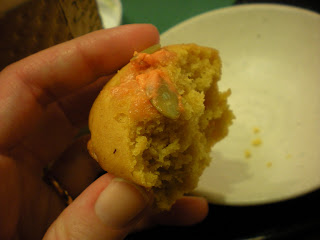 On a recent trip out to the far reaches of western Mass (on a desperate pre-holiday yarn run, if you must know), I suddenly realized I was right by the tea shop owned by the knowledgable authors of one of the best books on tea, The Story of Tea: A Cultural History and Drinking Guide, by Robert and Mary Lou Heiss. It's the sort of book that begs you to open to a random page and lose yourself in sensory delights, like the scent of tea roasting throughout Shizouka City, Japan, and a walk through the tea bushes with a small local producer.
On a recent trip out to the far reaches of western Mass (on a desperate pre-holiday yarn run, if you must know), I suddenly realized I was right by the tea shop owned by the knowledgable authors of one of the best books on tea, The Story of Tea: A Cultural History and Drinking Guide, by Robert and Mary Lou Heiss. It's the sort of book that begs you to open to a random page and lose yourself in sensory delights, like the scent of tea roasting throughout Shizouka City, Japan, and a walk through the tea bushes with a small local producer.On top of that, it's truly an encyclopedic guide to every type of tea and how it's consumed all over the world. I find myself constantly turning to it for reference and inspiration.
I was thrilled then to walk into Cooks Shop Here (65 King St., Northampton, Mass.), which the Heisses have run since 1974.
 It was like being in the proverbial candy store, and I ended up with some amazingly fragrant Earl Grey (blended in-house), a bit of Yunnan Gold Tips and something new for me, Immortal Goddess or Emei Shan E Rui ($10 for 2 ounces), a Chinese green that Robert recommended.
It was like being in the proverbial candy store, and I ended up with some amazingly fragrant Earl Grey (blended in-house), a bit of Yunnan Gold Tips and something new for me, Immortal Goddess or Emei Shan E Rui ($10 for 2 ounces), a Chinese green that Robert recommended.I think this is what I've been missing about Chinese greens: This tea brews up a beautiful pale golden hue, like the November midmorning light, and tastes incredibly sweet, smooth and deep. I practically felt immortal- which is necessary when you're plodding through something as time-consuming as knitting- as I gulped it down.
I will admit, however, I drank four cups in a row, which may have had something to do with that feeling.

If you're ever in the area, Cooks Shop Here is well worth a visit. Even if you're not nearby, the carefully curated teas and drinking accessories are available online, and stay tuned for more: The prolific authors will have another tea book out in about two years. It may seem a while to wait, but there's plenty of tea to explore- and to read about- in the meantime.
And plenty to knit, ug.

























